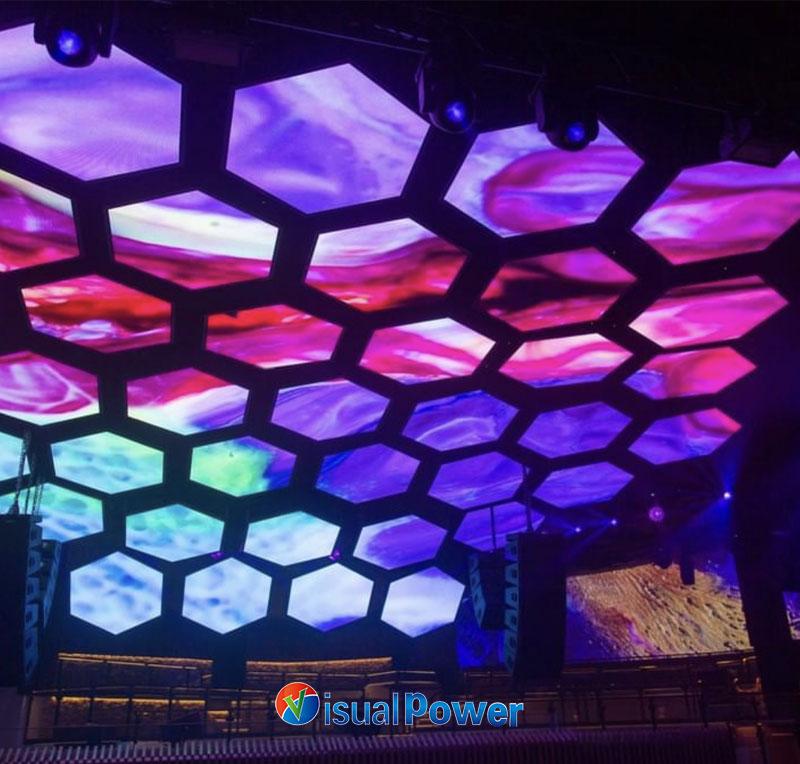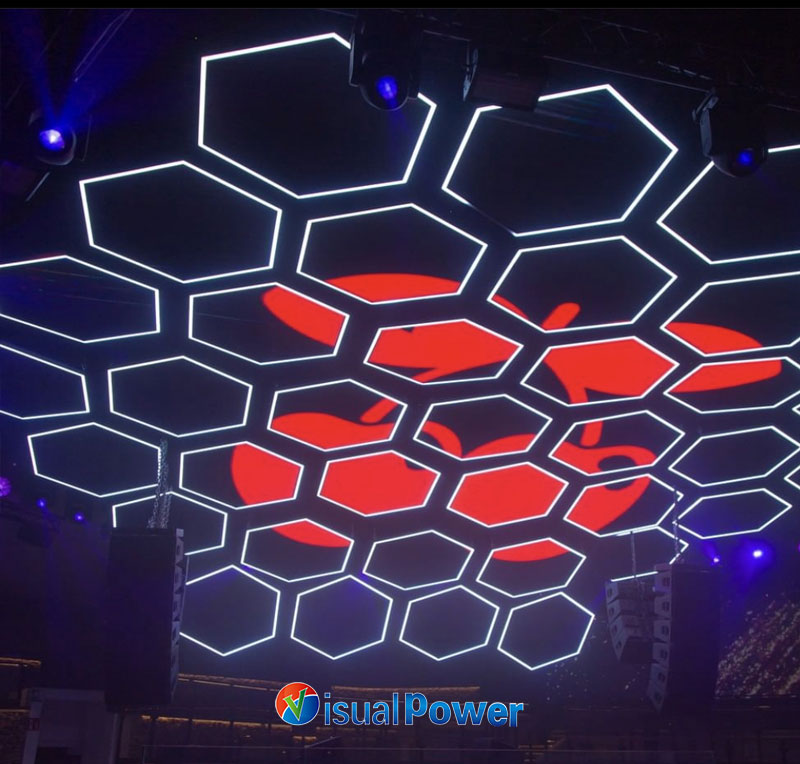Categories
- News (75)
- case study (6)
I remember the first time I saw the hexagonal LED screen on the ceiling of an exhibition hall, I was almost stunned. It’s not because it’s so “showy”, but because it has overturned my impression of the display screen being unchanging. Before that, the LED screen was nothing more than a rectangular “light box” to me. But that day, the hexagonal arrangement was as tense as a beehive, and the space suddenly “came alive” – the vision had a sense of flow, and the information seemed to be dancing.
To be honest, I have always been impatient with the rigid boundaries of traditional screens. Buildings, exhibitions, stages and commercial Spaces are increasingly pursuing individuality. Those uniform rectangular screens are simply superfluous symbols. The hexagon LED display is different. It is not merely about breaking boundaries; it is redefining the way of communication between the screen and space.

The hexagon is a very special shape. It not only possesses rigorous symmetry in geometry but also has a natural splicing ability. The honeycomb structure in nature is an example – achieving the greatest structural stability with the least material occupation. After introducing this geometric philosophy into LED display technology, it brings not only diverse forms but also a smarter way of space utilization.
In actual projects, I saw designers use it to construct curved cylindrical screens, spherical structures, and even suspend it in the air like a floating luminous device. Traditional rectangles simply cannot achieve such a combination. The hexagon module, like a jigsaw puzzle, can be freely combined, making it possible for wild and unrestrained ideas to come true.
I participated in the technical setup of a digital art exhibition, in which hexagonal LED units provided by visualpower were used. We arranged them vertically along the outside of the spiral escalator, extending from the first floor to the third floor. As the audience moves along the stairs, what they see is a “light screen” with dynamic information flow. Each floor has a different Angle, and every frame seems to be alive.
This kind of experience is something that no two-dimensional rectangular screen can offer. It is not merely dazzling; it is telling stories through space. This presentation method based on three-dimensional design is particularly effective in commercial Settings, such as immersive display Windows, brand installation art, stage play backgrounds, and even new building curtain walls.

Many people think that the splicing of hexagons is very complicated. In fact, it is quite the opposite. It is easier to adapt to non-standard Spaces than rectangles. Each hexagon module can be independently driven, and smooth transitions can be achieved between edges – whether it’s images or animations, there will be no sense of breakage due to Angle changes.
The advantages of modularization are not only reflected in the freedom of shape, but also in the later maintenance and expansion. Is one piece broken? Just replace that one directly. Want to extend it? Just add a few modules. There is no need to redesign the entire structure.
This flexibility makes it a “darling” in occasions such as event sites and exhibition projects that require rapid deployment.
I increasingly feel that today’s LED screens are no longer merely a medium for transmitting information. It is more like an emotional release device. Especially in brand experience Spaces and art installation projects, the shape, rhythm and color changes of the screen are all part of creating an atmosphere.
The greatest charm of the hexagon LED display lies in that it makes this form of expression concrete. It is not a cold technological product, but a creative “architectural language”, an existence that can be felt by people for its rhythm, flow and emotion.

Over the years, I have come into contact with more and more clients in my projects, who have explicitly proposed to “have visual memorable points”, “break the tradition”, and “have a futuristic feel”. One of the most practical, achievable and effective ways that I can think of is to use hexagonal LED modules.
The visual focus is no longer a one-way rectangle, but a series of breathing “honeycomb units”. Especially when used in conjunction with AI content generation systems and interactive sensing systems, its expressiveness can even approach the “illusion” state in reality.
This is not a temporary trend but part of the transformation of spatial language.
If the screen is the contact surface between us and the digital world, then the hexagon LED display is quietly changing the “language style” of this contact surface. It guides attention with shapes, organizes vision with structures, and redesigns our perception of space with geometry.
As a translator between content and space, I only hope that we can continue to have such a medium to gradually turn the imagined future city into reality.